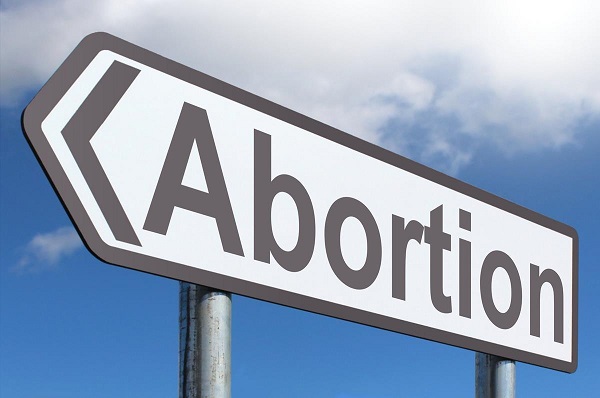Abortion Laws are Recent
Abortion was legal in America until the 1820s. An abortion is “a procedure to end a pregnancy”.
Around this time, surgical abortions were rare. Emmenagogue Herbs and medications were typically used to induce abortions before “quickening”, or fetal movement. Quickening usually occurs four months into pregnancy.
Women’s healthcare providers, including Midwives and Nurses, provided the abortion procedure. However, these are not the only services they provided. They were trusted medical professionals.
Midwives, nurses, and women’s healthcare providers, consisted mainly of Black women, who were often enslaved. Other women’s healthcare providers were Indigenous and white.
Restrictions on abortions were implemented to control women. The first restriction made it so that black women could not recieve abortions.
A movement for states to outlaw abortions began around the same time as the Civil War (1861). This movement was led by white male doctors who were supported by the Catholic Church.
This movement was racially motivated, as well as being an extension of the patriarchy. The male doctors wanted to control and regulate female bodies.
Roe v. Wade
In 1973, the ruling of the Supreme Court case, Roe v. Wade, established that women have the constitutional right to obtain an abortion before fetal viability.
Roe, or Jane Roe, was a fictional name used to protect the identity of the plaintiff, Norma McCorvey, an American activist. The plaintiff argued that a woman has the absolute right to terminate a pregnancy in any way at any time. A plaintiff is “a person who brings a case against another in a court of law”.
The defendant, Henry Wade, was at the time the district attorney of Dallas County, Texas. The defendant argued that “the right of the unborn child to life is greater than the Plaintiff’s right to privacy”. A defendant is “an individual, company, or institution sued or accused in a court of law”.
Bryon White and William Rehnquist, voted against Roe out of the nine Supreme Court Justices, Warren Burger, William Douglas, William Brennan Jr., Potter Stewart, Byron White, Thurgood Marshall, Harry Blackmun, Lewis Powell Jr., and, William Rehnquist.
Under Roe’s, Trimester Framework, abortions were not restricted in the first trimester of pregnancy. From the end of the first trimester on, a state could restrict abortions for the fetus carrier’s health. From the end of the second trimester, a state could completely outlaw abortions because the fetus is considered viable, meaning “capable of developing and surviving independently”.
However, in interest of the fetus carrier’s health, exceptions could be made after fetal viability.
Planned Parenthood of Southeastern Pennsylvania v. Casey
In 1992, the ruling of the Supreme Court case, Planned Parenthood of Southeastern Pennsylvania v. Casey, reestablished the basic principle of Roe v. Wade, women have the right to obtain an abortion before fetal viability.
The plaintiff in this case, Planned Parenthood of Southeastern Pennsylvania, included multiple Pennsylvanian abortion clinics, and a group of abortion providing Physicians.
The defendant, the Governor of Pennsylvania, Bob Casey Sr., argued that a state has the right to regulate abortion for the sake of a fetus or woman’s health.
The case’s question aimed to narrow the ruling of a previous case, Roe v Wade. Pennsylvania enacted new statutes that required women who want an abortion to wait twenty-four hours before the procedure, get informed consent (the doctors have to make sure that the patients know what’s happening during the procedure, and the outcomes and risks), notify their husbands (if they’re married), and get parental consent, (if they’re minors).
William Rehnquist, Byron White, Antonin Scalia, and Clarence Thomas, voted against Planned Parenthood of Southeastern Pennsylvania, and in favor of Casey out of the nine Supreme Court Justices, William Rehnquist, Byron White, Harry Blackmun, John Paul Stevens, Sandra Day O’Connor, Antonin Scalia, Anthony Kennedy, David Souter, and Clarence Thomas.
During this case, a new standard that would determine the validity of the restrictions for abortion seekers, was called, “undue burden”. This meant that if the restrictions that new laws brought would place “significant difficulty or expense” on the abortion seekers, then it would be unconstitutional and invalid.
Dobbs v. Jackson Women’s Health Organization
A Supreme Court draft opinion written by Associate Justice, Samuel Alito, for the case, Dobbs v. Jackson Women’s Health Organization, was leaked in early May, 2022.
A Supreme Court Opinion is a type of writing authored by the Justices themselves. The opinion was authenticized by Chief Justice, John Roberts Jr.
The current Chief Justice of the United States, is John Roberts Jr. The Associate Justices are Clarence Thomas, Stephen Breyer, Samuel Alito, Sonia Sotomayor, Elena Kagan, Neil Gorsuch, Brett Kavanaugh, and Amy Coney Barret.
The draft opinion called for Roe v. Wade to be overruled and said that Roe was “egregiously wrong from the start,”.
Opinions written by the court are not the final ruling of the case. Supreme Court Justices are still able to change their opinions.
A study from American Public Health Association says that “nearly 1 in 4 women is anticipated to have an abortion during her reproductive years”.
Planned Parenthood predicts that if Roe v Wade was overturned, Alabama, Arizona, Arkansas, Georgia, Idaho, Indiana, Kentucky, Louisiana, Mississippi, Missouri, Nebraska, North Dakota, Ohio, Oklahoma, South Carolina, South Dakota, Tennessee, Texas, Utah, West Virginia, and Wisconsin would eliminate access to all abortion procedures.
The most restrictive abortion regulation is in Texas. Texans are unable to receive an abortion after about six weeks into a pregnancy. Most people don’t even know if they’re pregnant then.
The Governor of California, Gavin Newsom, told Associated Press that California will “be a sanctuary,” should Roe v. Wade be overturned.





